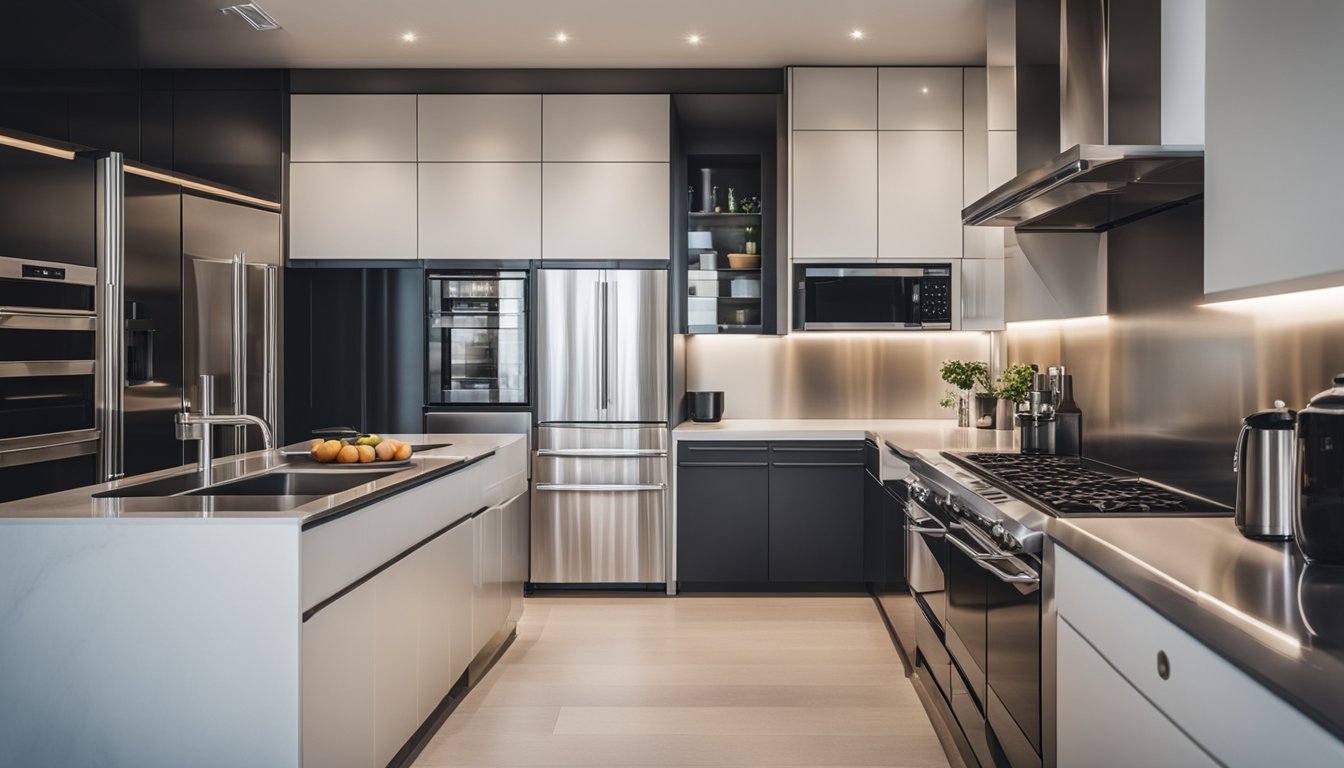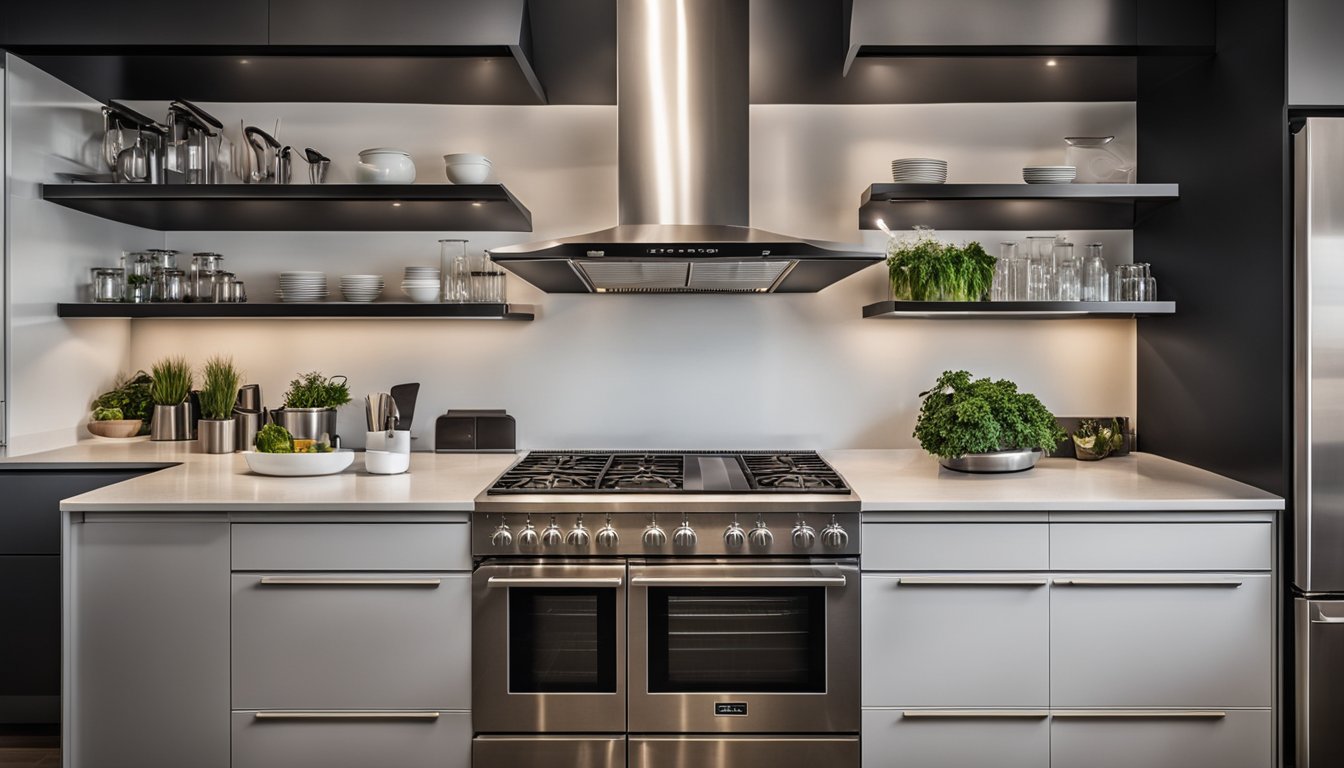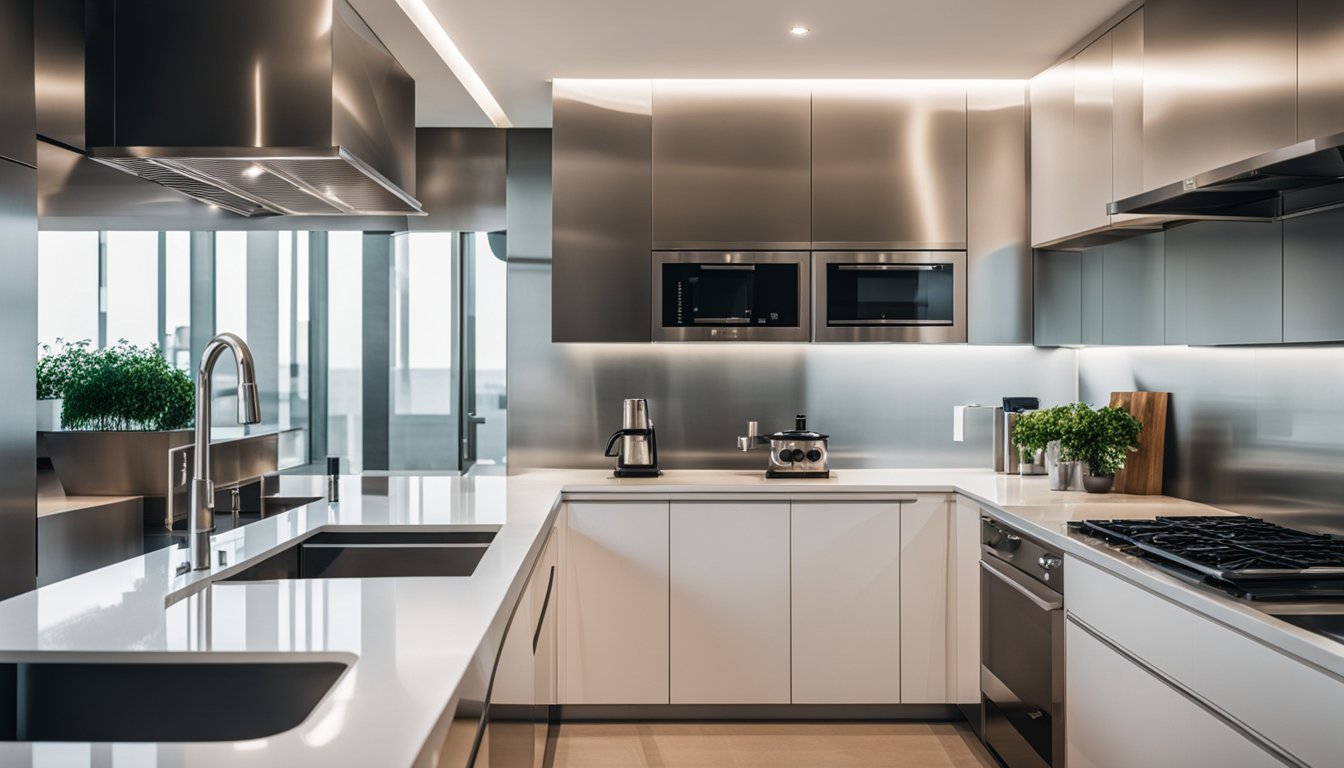The #1 Mistake Homeowners Make When Cleaning Stainless Steel Appliances
Stainless steel appliances are a staple in modern kitchens, prized for their sleek design and professional appearance. They can elevate the look of a kitchen, but they also come with the challenge of maintaining that pristine, smudge-free finish.
While many homeowners understand the importance of keeping these appliances clean, there’s a common mistake that can do more harm than good.
In this blog post, we’ll uncover the #1 mistake homeowners make when cleaning their stainless steel appliances and provide you with the knowledge to avoid it.
The Appeal of Stainless Steel Appliances
Stainless steel’s popularity in kitchen design is no accident. It boasts durability, resisting corrosion and rust, which is essential in the hub of the home.
The material’s aesthetic appeal lies in its reflective surface, which adds a sense of elegance and can make a kitchen feel more open. Moreover, its hygienic properties are due to its non-porous nature, making it an ideal surface for food preparation.
A survey by a leading appliance manufacturer found that over 70% of homeowners own stainless steel appliances, yet a significant number are unaware of the proper care these appliances require.
This lack of awareness can lead to the common mistake we’re about to explore, which can compromise the appearance and lifespan of these kitchen investments.
Practical Tip: When purchasing stainless steel appliances, take a moment to read the care instructions provided by the manufacturer. They often include crucial information on what to avoid and how to maintain the appliance’s finish, ensuring your kitchen continues to shine for years to come.

The #1 Mistake Homeowners Make: Using Abrasive Cleaners and Tools on Stainless Steel
When it comes to maintaining the pristine condition of stainless steel appliances, the cardinal rule is to avoid abrasiveness. The most significant error made in cleaning these appliances is the use of abrasive cleaners or tools.
Here’s a closer look at what to avoid:
Specific Abrasive Cleaners to Avoid:
- Scouring powders like Comet or Ajax
- Chlorine bleach-based cleaners
- Cleaners containing chloride or other harsh chemicals
- Oven cleaners
- Ammonia-based cleaners
Specific Abrasive Tools to Avoid:
- Steel wool pads
- Wire brushes
- Scouring pads, such as those made of metal or rough plastic
- Abrasive scrub sponges
- Any tool with a rough, serrated, or textured surface
Why These Abrasive Tools and Cleaners Damage Stainless Steel
Abrasive cleaners and tools can cause microscopic scratches on the surface of stainless steel. Over time, these scratches can accumulate and become visible, tarnishing the smooth finish.
They also break down the chromium oxide layer, a self-healing layer that forms on stainless steel, which protects it from rust and corrosion. When this layer is compromised, the steel is exposed to the elements, leading to rust and a breakdown of the material.

Why Homeowners Might Think They SHOULD Use Abrasive Tools and Cleaners
Homeowners might reach for these harsh cleaners and tools for a few reasons.
First, there’s a common misconception that tougher stains require tougher cleaning methods.
Second, if they’re unaware of the unique properties of stainless steel, they might treat it like any other surface that can handle abrasive cleaning.
Lastly, there’s the issue of convenience—many households already have these abrasive cleaners and tools on hand and may use them without considering the potential damage.
How To Properly Clean Stainless Steel (Step-by-Step)
Keeping your stainless steel appliances clean and shiny doesn’t have to be a daunting task.
By following these simple steps, you can maintain their luster without causing any damage:
- Gather Your Supplies:
- Warm water
- Mild dish soap
- Baking soda (for tougher stains)
- White vinegar (for disinfecting and shine)
- Soft microfiber cloths
- Stainless steel cleaner (optional for extra shine)
- Remove Loose Debris:
- Use a dry microfiber cloth to dust off any loose particles or debris from the appliance’s surface.
- Prepare Your Cleaning Solution:
- Mix a small amount of mild dish soap with warm water in a bowl or sink.
- Wipe Down the Appliance:
- Dip your microfiber cloth into the soapy water, wring it out so it’s damp but not dripping, and wipe the appliance following the direction of the grain. The grain is the subtle lines you can see on the surface of the steel.
- Rinse With Clean Water:
- After soaping, rinse the cloth with clean water and wipe the appliance to remove any soap residue.
- Dry Thoroughly:
- Use a fresh, dry microfiber cloth to dry the appliance. This step is essential to prevent water spots, which are more noticeable on stainless steel.
- Address Tough Stains:
- If you encounter stubborn stains, create a paste with baking soda and water and apply it gently with a cloth, again following the grain. Rinse thoroughly afterward.
- Polish for Shine (Optional):
- For extra shine, you can use a commercial stainless steel cleaner or a few drops of white vinegar on a microfiber cloth. Buff gently and watch as the natural shine of the stainless steel comes back to life.

Preventive Maintenance for Stainless Steel Appliances
To keep your stainless steel appliances looking great and functioning well for years to come, preventive maintenance is key.
Here’s a step-by-step guide to help you protect and preserve your appliances:
- Daily Wiping:
- Use a clean, soft cloth or microfiber towel to wipe down the surfaces of your stainless steel appliances daily. This removes dust, spills, and fingerprints before they have a chance to set and cause more stubborn stains.
- Immediate Spill Cleanup:
- Clean up spills and splatters immediately to prevent them from hardening and becoming more difficult to remove. This is especially important for substances that can be corrosive or cause discoloration, like acidic foods or salty substances.
- Proper Cleaning Agents:
- Always use the right cleaning agents, as mentioned previously: mild detergents, baking soda for tough stains, and specific stainless steel cleaners. Avoid any products containing chlorine, bleach, or abrasive substances.
- Follow the Grain:
- When cleaning or wiping down your appliances, always go with the grain of the stainless steel. This prevents scratching and helps maintain the original finish and texture of the appliance.
- Regular Polishing:
- Use a stainless steel polish or cleaner every few weeks to maintain the shine and provide a protective coating. This can also help minimize the appearance of any existing minor scratches and protect the surface from future fingerprints and dirt.
- Avoid Contact with Other Metals:
- When possible, avoid allowing your stainless steel appliances to come into contact with other metals, such as cast iron or copper, which can lead to rust or corrosion due to a reaction between dissimilar metals.
- Use Protective Mats:
- Place protective mats under any objects that might scratch the surface of your stainless steel appliances, such as metal containers, to prevent scratches.
- Humidity and Chlorine Exposure:
- Keep the environment around your stainless steel appliances free from excessive humidity and chlorine exposure, which can accelerate corrosion. Ensure good ventilation if your appliance is in an area with high moisture, like near a stove or sink.
- Soft Water:
- If you have hard water, it can leave deposits on stainless steel. Consider using distilled or filtered water for cleaning, or install a water softener to reduce mineral buildup.

Let Us Know How We’re Doing!
Did this expertly prepared resource answer your question?
Do you have another question about home maintenance, home improvement projects, home appliance repair, or something else?
Get more information, send in questions and keep the discussion going by contacting the I’ll Just Fix It Myself company customer service team at at 1-800-928-1490 or Email us at [email protected]
